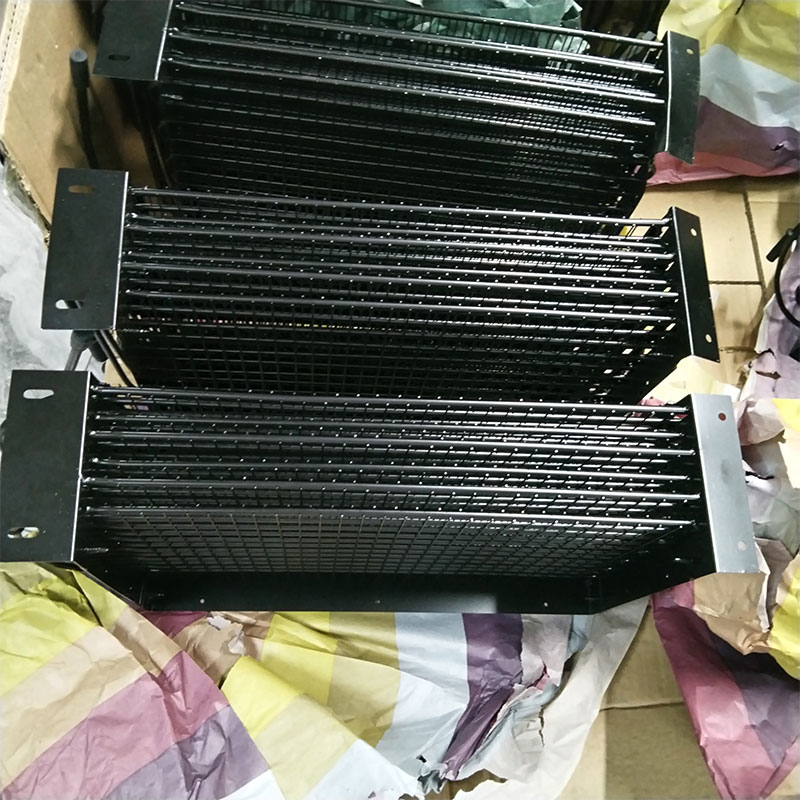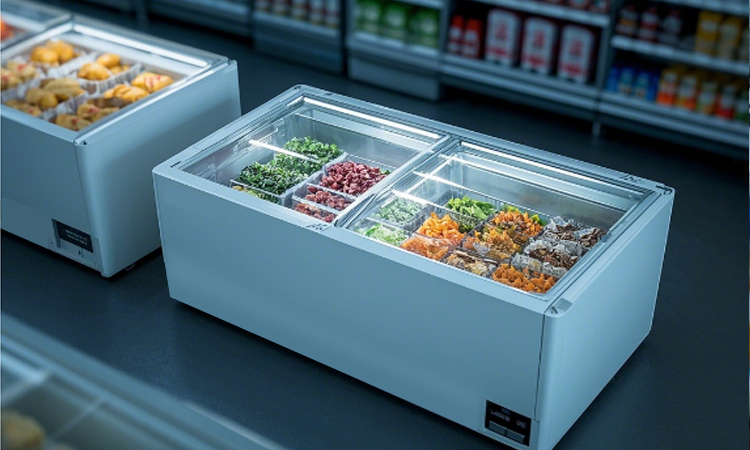
The other day I was helping a neighbour mender her refrigerator. She pointed to the side of the unit and said, ‘This part feels terribly hot to the touch—is it broken? Should I unplug it?’ I could tell straight away she'd mistaken the condenser's normal operation for a fault.

In truth, it's not just fridges. Freezers, small refrigerators, and even supermarket display cabinets all contain a component called a ‘condenser’. Many people have used refrigeration equipment for decades without understanding its purpose. Today, I'll break down the condenser in plain language: why does it make the fridge hot? What happens if it gets dirty? How can you maintain it to save energy? After reading this, you too can become a ‘refrigeration whizz’. .
First, understand this: the condenser is the ‘heat exhaust outlet’ of refrigeration equipment. Without it, your fridge simply won't cool.
Simply put, the condenser acts as the ‘heat management system’ for refrigeration equipment. Your fridge's ability to cool relies on the refrigerant circulating and transferring heat within it: The refrigerant first absorbs heat within the refrigerator's evaporator (drawing warmth from the interior to cool it down), transforming into a high-temperature, high-pressure gas. This gas is then transported by the compressor to the condenser. The condenser's role is to ‘discharge this heat,’ allowing the superheated refrigerant to revert to a low-temperature liquid before returning to the evaporator to complete the cycle.
Should the condenser fail or be improperly installed, preventing heat dissipation, the consequences are immediate: either the refrigerator cools slowly (taking ages to reach the set temperature), or the compressor labours relentlessly to no avail. This ultimately leads to soaring electricity consumption and may even burn out the compressor.
Moreover, condensers in different refrigeration units are concealed in varying locations, with these two types being most common:
Refrigerators / Freezers: Typically located on the side or rear. Older models often featured exposed metal coils on the back; newer designs, prioritising space efficiency and aesthetics, embed the condenser within the side panels. Thus, if you feel warmth on the refrigerator's side, this indicates normal condenser operation.
Commercial refrigerators / display cabinets: Typically located at the base or top. For instance, in supermarket island cabinets, the condenser is often fitted at the base and may include a fan to assist heat dissipation. Consequently, you may feel airflow near the base of the cabinet – this is the condenser expelling heat.
Don't panic! These ‘condenser issues’ are actually normal and require no repair.
Many people mistake condenser-related phenomena for equipment failure, when in fact most are perfectly normal. Not only might you make a wasted trip for repairs, but you could also be overcharged. Let's first distinguish between ‘normal behaviour’ and ‘genuine faults’:
1. Hot refrigerator sides/back: Temperatures up to 50°C are perfectly normal
If the refrigerator sides feel warm to the touch in summer – even reaching 40-50°C – don't be alarmed. This occurs because higher ambient temperatures mean the condenser must dissipate more heat, naturally raising its temperature. Provided it isn't too hot to touch (over 60°C) or only one side is hot while the other remains completely cool (which could indicate a blocked condenser coil), no action is required.
2. Small water droplets on the condenser surface: Common during high humidity
During the rainy season or in humid southern regions, small water droplets may form on the condenser surface. This isn't a leak; it occurs because the condenser's lower temperature (10-20°C below ambient) causes moisture in the air to condense upon contact with the cold coils, much like condensation on a chilled drink bottle. Simply wipe it dry; it doesn't affect performance.
3. Slight ‘humming’ from the condenser: Fan assisting heat dissipation
Condensers equipped with fans (such as those in commercial refrigerators) will emit a faint humming sound during operation. Provided the noise is consistent and free of abnormal sounds (e.g., hissing air leaks or clunking noises), this is perfectly normal.
These ‘incorrect operations’ can damage the condenser – 90% of people have made these mistakes.
Though durable, condenser units can be quietly harmed by common habits. Avoid these three pitfalls in particular:
1. Covering the fridge with magnets / piling items on the sides: Blocking heat dissipation is like ‘making the condenser sweat’
Some people like to cover the sides of their fridge with magnets or pile clutter against the sides/back. While seemingly harmless, this blocks the condenser's heat dissipation channels. Heat cannot escape, causing the condenser's temperature to rise. The compressor is forced to work overtime, potentially adding £2-5 to your monthly electricity bill. Over time, this can shorten the compressor's lifespan by 2-3 years.
The correct approach is to maintain clear space around the refrigerator's sides and rear: leave at least 5 centimetres at the sides and 10 centimetres at the rear. Avoid stacking any items, and limit fridge magnets — particularly on the central side panels (where the condenser is primarily located).
2. Using a high-pressure water jet on the condenser: This can damage the pipes, leading to refrigerant leakage
When cleaning domestic freezers, some individuals, seeking convenience, directly blast the rear condenser with a high-pressure washer. This is gravely mistaken — the condenser's metal pipes are thin, and high-pressure water can damage pipe joints, causing refrigerant leakage. Once leaked, the refrigerator will cease cooling entirely, with repairs costing hundreds of pounds.
Correct cleaning method: After disconnecting the power, gently brush away dust from the condenser surface using a soft-bristled brush (such as an old toothbrush), or use a vacuum cleaner's small nozzle attachment to suck up the dust. Do not use water.
3. Covering the condenser with a blanket in winter: This actually causes it to overheat and fail
In northern winters, some believe ‘since the refrigerator doesn't need to dissipate heat, covering it with a blanket will keep it warm’ and drape blankets over the back or sides. This blocks the condenser's heat dissipation channels. Even in winter, the condenser must release heat. Covering it prevents heat escape, still causing compressor overload.
No insulation is required for the condenser in winter; simply ensure adequate ventilation space remains.
Three simple steps to maintain your condenser, saving energy and extending your refrigerator's lifespan
Condensers require infrequent maintenance, but servicing them once or twice yearly can boost refrigeration efficiency by 10-15% and reduce electricity bills. The steps are remarkably straightforward:
1. Disconnect power first: Safety comes first
Whether cleaning the condenser of a refrigerator or freezer, the first step must be to disconnect the power supply. This is especially crucial when cleaning condensers on the sides or rear to avoid electric shock.
2. Remove dust: Use a soft brush or vacuum cleaner
Exposed rear condenser: Use a soft-bristled brush to gently sweep along the metal tubes, removing surface dust. Avoid scraping with hard objects to prevent damaging the pipes.
Built-in side condenser: No need to remove the outer casing. Simply clear any clutter around the refrigerator's sides to ensure adequate ventilation space.
Condenser with fan (commercial refrigeration units): Additionally wipe dust from the fan blades. Smooth fan rotation ensures effective heat dissipation.
3. Inspect piping: Check for deformation or oil stains
Whilst cleaning, briefly inspect the condenser's pipework (particularly at the rear). Should you notice any significant bends, deformation, or oil stains at pipe joints (refrigerant leaks carry refrigeration oil, forming these stains), seek a professional repair technician. Do not attempt repairs yourself.
Final summary: Do not overlook the condenser – it is the refrigerator's ‘crucial heat dissipation component’.
Indeed, for refrigeration equipment, the condenser is as vital as the ‘lungs’ — only when it dissipates heat properly can the unit cool effectively. There's no need for excessive attention, but remember these three points: ‘Don't obstruct the heat dissipation space, don't rinse with water, and clean the dust annually.’ This will keep the condenser functioning optimally, ensuring your refrigerator lasts longer and consumes less electricity.





